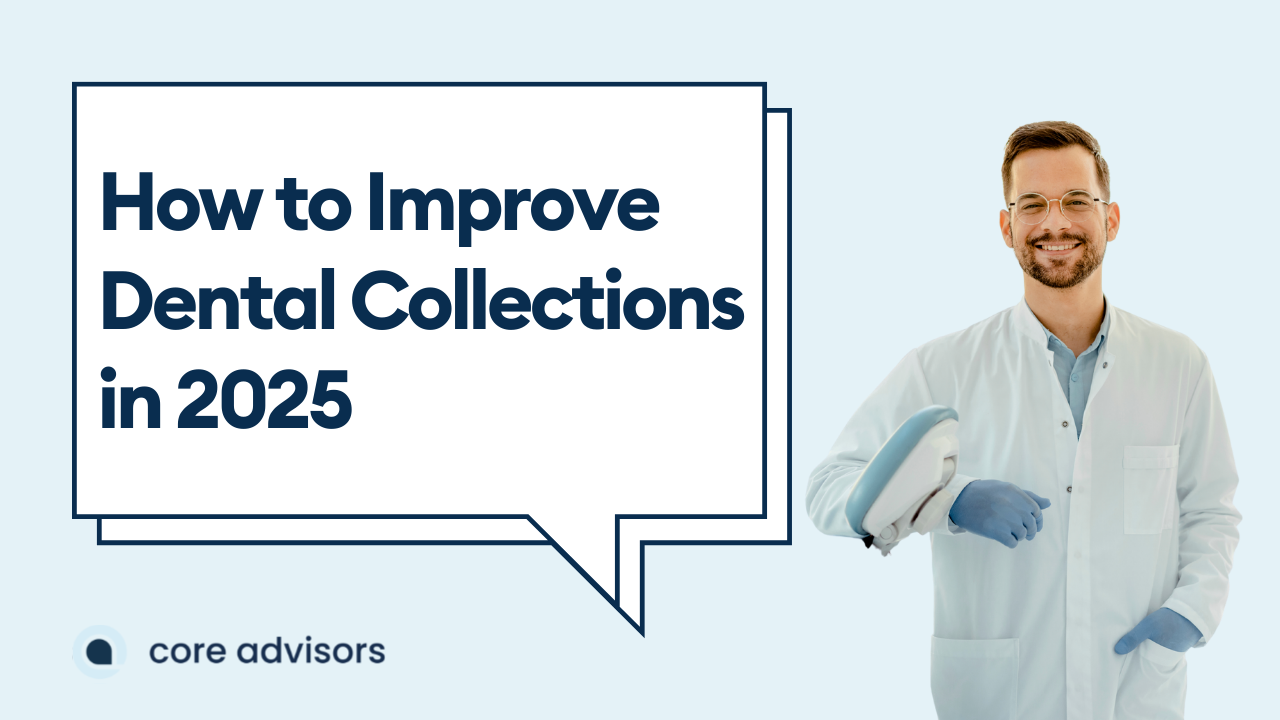The middle of the year is a great time to take a breath and look at what’s really happening inside your practice financially. Not in a panic. Not in a “what went wrong” kind of way. Just a clear, honest look at what the first half of the year has looked like and what you might want to change moving forward.
This is something we do with all of our dental clients around this time of year. It’s not about massive overhauls or complicated spreadsheets. It’s about making sure your practice is working for you, not the other way around.
Here’s what we walk through during the mid-year financial check-in for dentists.
How’s the Practice Actually Doing?
The first thing we look at is the story the numbers are telling. Most dentists have a sense of how things feel. Maybe collections are slower than usual, or the schedule has been packed but the bank account doesn’t reflect that. The numbers can help confirm those instincts or offer a different perspective.
Start by looking at your production and collections for the year so far. Not just how much work is being done, but how much is actually being collected. If collections are lagging behind, that might be a sign that your team is spending too much time chasing insurance or that patient balances are stacking up.
When we work with dentists on this, we often see that the production numbers look fine on paper, but when we dig into the collection percentage or the aging report, we find gaps that could be costing tens of thousands of dollars a year. It’s not always obvious unless you take the time to look closely.
Are Costs Creeping Up?
Next, we’ll check in on overhead. This is where a lot of dentists are surprised. You might be bringing in more than last year, but if your lab bills, supply costs, or payroll have all quietly increased, your profits could be staying flat or even going down.
Take a look at what you’re spending and whether it’s aligned with where you wanted to be. Are you paying more for materials than you were in January? Are you overstaffed or trying to grow but constantly understaffed? Have you signed up for tools or software you no longer use but are still paying for?
This isn’t about cutting corners. It’s about being intentional. We go through these line by line with our clients. Sometimes we find easy wins, like a vendor charging more than they should, or a subscription no one realized was still active. Other times, it’s a bigger-picture adjustment, like restructuring roles to better support the kind of dentistry you want to be doing.
What’s Going On With Cash Flow?
This part might be the most important. If you’re constantly feeling like there should be more money in the account, it’s worth digging into the timing of how and when money moves in and out.
How much cash is coming in each month, and where is it going?
Do you have enough set aside to handle unexpected repairs or slower months this fall?
Or is too much of your income just sitting idle in your checking account, not being put to work?
When we sit down for these mid-year financial check-ins for dentists’ reviews, we’ll often walk through a simple cash flow analysis so you can see patterns that aren’t always obvious week to week. You don’t need to be a spreadsheet person to benefit from this. You just need to know whether your current habits are supporting the bigger picture goals you’ve set for yourself and your practice.
Are You Set Up Well for Taxes?
The middle of the year is when you can still make changes that impact your tax bill in a meaningful way. This is when we help clients adjust estimated payments if income is up or down, or look at whether it makes sense to contribute more to retirement, invest in equipment, or time certain expenses before year-end.
The earlier you look at these things, the more options you have. Waiting until December limits your flexibility. We try to take advantage of this summer window to course-correct if needed, instead of trying to pull rabbits out of hats during the holidays.
And Finally, What’s the Plan?
This is where the numbers become useful. Once you understand where you are financially, the next step is asking where you’re headed. Are you planning to grow your hygiene department? Thinking about cutting back on clinical days? Want to increase profitability without burning out?
A mid-year check-in is the perfect time to reconnect with those goals and make sure your financial habits are aligned with where you want to be. We do this with clients using a few planning tools that let us test out different scenarios. If you raise your fees slightly or drop a low-margin procedure, what happens to your cash flow? If you hire a new assistant or change your schedule, how does that affect profit margins?
These aren’t theoretical questions. They’re the kinds of decisions that shape how your practice feels day to day. Mid-year is the sweet spot to revisit them because there’s still time to adjust.
You Don’t Have to Overcomplicate It
If you haven’t done a check-in yet this year, that’s okay. Set aside a couple of hours to look at your numbers, reflect on what’s working and what’s not, and make a short list of things to improve. Even small changes can have a big impact when you’re intentional about them.
And if this kind of review feels overwhelming or like something you keep meaning to do but never quite get around to, you’re not alone. Most dentists we work with feel the same way before we build a system that makes it easier to stay on top of.
The good news is you don’t have to figure it out all at once. You just have to start with a few honest questions, and let the answers guide what comes next.
A Mid-Year Checklist You Can Use Right Now
If you’re carving out time for a mid-year financial check-in, here’s a simple checklist we use with our own clients.
No pressure to hit every item perfectly. The point is to get clarity and make any small adjustments now that could pay off by year-end.
☐ Compare your year-to-date production and collections to last year
☐ Look at your collection percentage and patient AR
☐ Review overhead categories and spot any increases
☐ Check in on payroll and staffing levels
☐ Run a quick cash flow review and update your reserves plan
☐ Adjust estimated taxes if income has changed
☐ Check your retirement contributions so far
☐ Revisit your practice goals and see what’s still on track
☐ Decide on any strategic moves you want to make before December
Start there.
You might be surprised by what you discover once you actually sit down and look.
And you’ll be in a much better place to finish the year feeling confident and in control.





